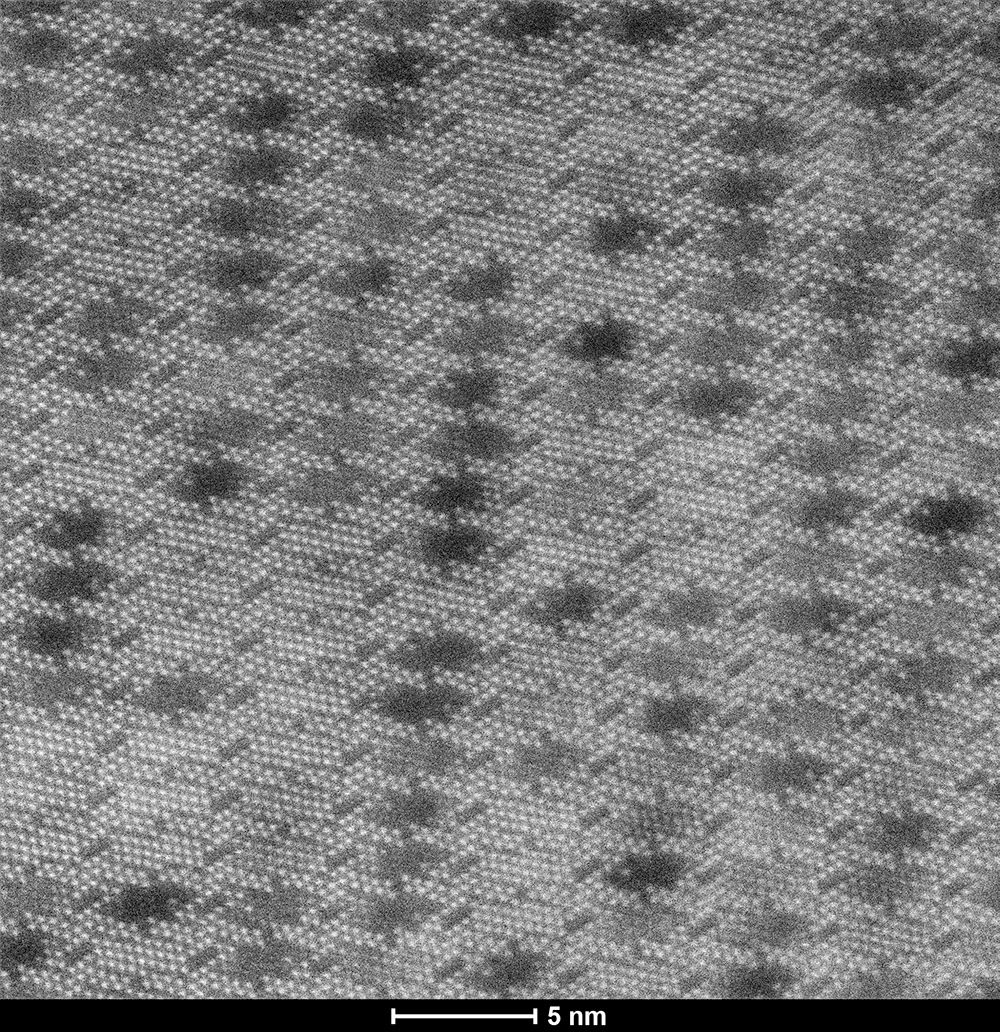During their many years of research Dr Cristi Ciobanu and her colleagues at the University of Adelaide have been using AMMRF’s advanced microscopy to gain in depth knowledge about the structure of these minerals. Previous discoveries by this group found that micro to nanoscale processes are responsible for gold-enrichment in common sulfide ores. From these findings they concluded that fine gold inclusions must be linked to gradual changes in copper concentration within the bismuth minerals, but only now can these conclusions be directly verified.

Scanning transmission electron micrograph showing the atomic arrangement in the new mineral. Heavier elements show up as darker dots.
The new aberration-corrected transmission electron microscope in the AMMRF (now Microscopy Australia) at University of Adelaide takes Dr Ciobanu’s investigations to the atomic level. By directly visualising the structural arrangement of atoms in the complex crystal lattice of the sulfosalts, they have identified a new mineral similar to neyite and cuproneyite. The analytical capability of the new instrument has enabled the researchers to directly identify the arrangement of different elements within this new mineral’s crystal lattice. The discovery of this new sulfosalt has important implications for elemental distribution both within sulfosalts, and at the larger mineral and deposit scale, opening up new possibilities for economically viable ore deposits.
Array
September 21, 2015